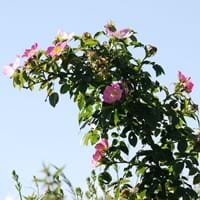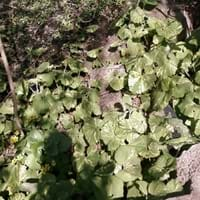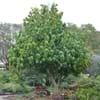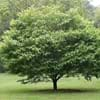Life Span
Perennial
Perennial
Type
Flowering Plants
Herbs
Origin
Europe, India, Northwestern Africa, Western Asia
China, Japan, Korea
Types
Not Available
Not Available
Habitat
disturbed sites, Roadsides, stream banks, Woods
gardens, Grassland, Homesteads, Open areas
USDA Hardiness Zone
Not Available
5-9
AHS Heat Zone
Not Available
9-4
Sunset Zone
Not Available
2a, 2b, 3a, 3b, 4, 5, 6, 7, 8, 9, 10, 14, 15, 16, 17, 18, 19, 20, 21, 22, 23, 24
Habit
Upright/Erect
Clump-Forming
Flower Color
Deep Pink, Pale Pink, White
Light Yellow, Ivory
Flower Color Modifier
Bicolor
Bicolor
Fruit Color
Non Fruiting Plant
Not Available
Leaf Color in Spring
Green, Gray Green, Dark Green
Green, Light Green, Light Yellow, Ivory
Leaf Color in Summer
Green
Green, Light Yellow, Ivory
Leaf Color in Fall
Green, Gray Green, Dark Green
Green, Light Yellow, Ivory
Leaf Color in Winter
Green, Dark Green
Not Available
Plant Season
Spring, Summer
Spring, Summer, Fall
Sunlight
Partial shade, Partial Sun
Partial shade, Full Shade
Type of Soil
Clay, Loam
Clay, Loam, Sand
The pH of Soil
Alkaline
Acidic, Neutral, Alkaline
Soil Drainage
Well drained
Poorly Drained
Bloom Time
Spring, Summer
Early Spring, Late Winter
Tolerances
Wet Site
Wet Site
Where to Plant?
Container, Ground, Pot
Ground, Pot
How to Plant?
Seedlings, Stem Planting
Divison, Stem Planting
Plant Maintenance
Medium
Medium
Watering Requirements
Keep the ground moist but not water-logged
Allow soil to be completely dry in between waterings, Keep ground moist, Needs 2-3 times watering per week, Over-head watering, Requires watering in the growing season
In Summer
Lots of watering
Lots of watering
In Spring
Moderate
Moderate
In Winter
Average Water
Average Water
Soil pH
Alkaline
Acidic, Neutral, Alkaline
Soil Type
Clay, Loam
Clay, Loam, Sand
Soil Drainage Capacity
Well drained
Poorly Drained
Sun Exposure
Partial shade, Partial Sun
Partial shade, Full Shade
Pruning
cut main flower spike, Remove dead branches, Remove dead or diseased plant parts
Remove deadheads, Requires very little pruning, Shape and thin as needed
Fertilizers
Apply 10-10-10 amount, as it is a flowering plant, use high phosphorous content fertilizer
All-Purpose Liquid Fertilizer
Pests and Diseases
Birds, Red blotch
Pests and diseases free, Red blotch
Plant Tolerance
Drought, Wet Site
Wet Site
Flower Petal Number
Single
Not Available
Foliage Texture
Medium
Bold
Foliage Sheen
Matte
Glossy
Attracts
Birds, Small mammals
Not Available
Allergy
Constipation, Diarrhea, Headache, Heartburn, Nausea, Pain and fatigue, Stomach pain, Vomiting
no allergic reactions
Aesthetic Uses
Bonsai, Bouquets, Cottage Garden, Showy Purposes
Showy Purposes
Beauty Benefits
Good for skin, Skin Problems
Not Available
Environmental Uses
Air purification, Food for birds
Air purification
Medicinal Uses
Astringent, Diuretic, Laxative, Vitamin C
No Medicinal Use
Part of Plant Used
Flowers, Rose Hip
Whole plant
Other Uses
Making Perfumes, Used as Ornamental plant, Used for its medicinal properties
Not Available
Used As Indoor Plant
Yes
Yes
Used As Outdoor Plant
Yes
Yes
Garden Design
Feature Plant, Mixed Border
Bog Garden, Container, Feature Plant, Water Gardens
Botanical Name
Rosa canina
PETASITES japonicus 'Variegatus'
Common Name
Dog Rose
Giant Butterbur, Japanese Butterbur, Variegated Butterbur
In Hindi
एक प्रकार का जंगली गुलाब
variegated butterbur
In German
Heckenrose
bunte Pestwurz
In French
Dog Rose
pétasite panachée
In Spanish
Perro se levantó
butterbur abigarrado
In Greek
Dog Rose
διαφοροποιημένα butterbur
In Portuguese
Dog Rose
butterbur variegada
In Polish
Dzika róża
barwny Lepiężnik
In Latin
cynorrhodon
varius butterbur
Phylum
Magnoliophyta
Not Available
Class
Magnoliopsida
Not Available
Family
Rosaceae
Asteraceae
Clade
Angiosperms, Eudicots, Rosids
Angiosperms, Asterids, Eudicots
Tribe
Not Available
Senecioneae
Subfamily
Not Available
Not Available
Properties of Dog Rose and Variegated Butterbur
Wondering what are the properties of Dog Rose and Variegated Butterbur? We provide you with everything About Dog Rose and Variegated Butterbur. Dog Rose has thorns and Variegated Butterbur doesn't have thorns. Also Dog Rose does not have fragrant flowers. Dog Rose has allergic reactions like Constipation, Diarrhea, Headache, Heartburn, Nausea, Pain and fatigue, Stomach pain and Vomiting and Variegated Butterbur has allergic reactions like Constipation, Diarrhea, Headache, Heartburn, Nausea, Pain and fatigue, Stomach pain and Vomiting. Compare all the properties and characteristics of these two plants. Find out which of these plant can be used as indoor plant. If you are interested to decorate your house and garden, find out aesthetic uses, compare them and select the plant which will beautify your surrounding. Along with beautification, try comparing medicinal and edible uses of Dog Rose and Variegated Butterbur and you can choose the plant having best and most benefits.
Season and Care of Dog Rose and Variegated Butterbur
Season and care of Dog Rose and Variegated Butterbur is important to know. While considering everything about Dog Rose and Variegated Butterbur Care, growing season is an essential factor. Dog Rose season is Spring and Summer and Variegated Butterbur season is Spring and Summer. The type of soil for Dog Rose is Clay, Loam and for Variegated Butterbur is Clay, Loam, Sand while the PH of soil for Dog Rose is Alkaline and for Variegated Butterbur is Acidic, Neutral, Alkaline.
Dog Rose and Variegated Butterbur Physical Information
Dog Rose and Variegated Butterbur physical information is very important for comparison. Dog Rose height is 300.00 cm and width 200.00 cm whereas Variegated Butterbur height is 60.00 cm and width 120.00 cm. The color specification of Dog Rose and Variegated Butterbur are as follows:
Dog Rose flower color: Deep Pink, Pale Pink and White
Dog Rose leaf color: Green, Gray Green and Dark Green
Variegated Butterbur flower color: Light Yellow and Ivory
- Variegated Butterbur leaf color: Green, Light Green, Light Yellow and Ivory
Care of Dog Rose and Variegated Butterbur
Care of Dog Rose and Variegated Butterbur include pruning, fertilizers, watering etc. Dog Rose pruning is done cut main flower spike, Remove dead branches and Remove dead or diseased plant parts and Variegated Butterbur pruning is done Remove deadheads, Requires very little pruning and Shape and thin as needed. In summer Dog Rose needs Lots of watering and in winter, it needs Average Water. Whereas, in summer Variegated Butterbur needs Lots of watering and in winter, it needs Average Water.





